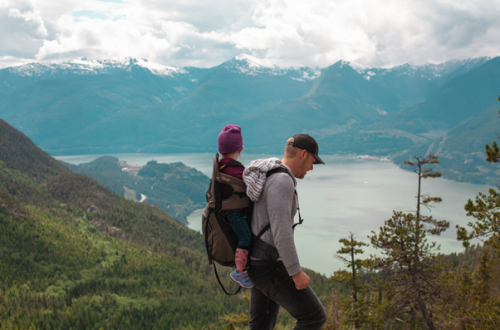When embarking on your first hiking expedition, it is essential to be prepared. There are a few items that you will need to make the journey safe and enjoyable. This blog post will discuss what to bring with you when hiking in the great outdoors.
1) Navigation
A map and compass are essential for any hike, especially if you are unfamiliar with the area. A GPS device can also be helpful but keep in mind that batteries can die, and the signal can be lost in remote areas. It is also always a good idea to let someone know your hiking plans before you set out, so they can contact authorities if you do not return as expected.
Also, be sure to know your own limits. A hike that is challenging for one person may be too much for another. Be honest with yourself about your physical fitness and abilities and choose a hike that is within your comfort zone.
If you are new to hiking, it is best to start small. There are many short and easy trails all over the world that can introduce you to the activity without overwhelming you. Once you have some experience under your belt, then you can start planning longer and more challenging hikes.
2) Clothing and Footwear
The type of clothing and footwear you need will depend on the climate and terrain of the hike you are undertaking. In general, however, you will want to dress in layers that can be easily added or removed as the temperature changes.
Sturdy shoes with good traction are also a must. Hiking boots are ideal, but sneakers or running shoes can also work in a pinch. Avoid sandals or flip-flops, as they offer little support and protection from the elements.
If you will be hiking in a remote area, it is also a good idea to pack a change of clothes in case you get wet or dirty. Better yet, bring along some plastic bags to keep your extra clothes dry and clean.
3) Shelter
Tent, tarp, bevy sack, or hammock? The type of shelter you need will depend on the length and difficulty of your hike. For short and easy hikes, a simple tarp or bevy sack may be all you need. However, for longer and more difficult hikes, you will want something more substantial, like a tent or hammock.
Keep in mind that tents can be heavy and bulky, so they are not always the best option for shorter hikes. If you are unsure about what type of shelter to bring, ask an experienced hiker or consult a hiking guidebook. No matter what type of shelter you choose, always make sure to pack a groundsheet or footprint to protect your gear from the elements. In addition, always pack a few extra zip ties or rope in case you need to make repairs on the trail.
4) Sleeping
You will need a sleeping bag or quilt to stay warm at night, regardless of the season. Down is the lightest and most compressible option, but it does not insulate well when wet. Synthetic insulation is heavier and bulkier, but it performs better in damp conditions. However, if you are hiking in a cold climate, you may want to bring an insulated sleeping pad to prevent heat loss through the ground.
In addition to a sleeping bag or quilt, you will also need something to sleep on. A camping cot is comfortable but bulky and heavy. An inflatable mattress is lighter and more compact, but it can be punctured easily. For ultralight hikers, a foam mat or even a pile of leaves can suffice.
No matter what you choose to sleep on, always make sure to pack a pillow. A stuff sack filled with clothes makes an excellent makeshift pillow, or you can purchase an inflatable travel pillow.
5) Sturdy backpack
One of the most important things to have when embarking on a hike is a sturdy men’s military tactical backpack. This will be your home away from home, so choose one that is comfortable and has enough room to carry all of your gear. If you are planning a long hike, you may even want to consider investing in a pack with an internal frame.
When choosing a backpack, always make sure to try it on before you buy it. The straps should be adjustable so that you can customize the fit, and the bag should sit comfortably on your hips without causing too much strain on your back or shoulders.
Once you have selected the perfect backpack, be sure to pack it carefully. Heavy items should be close to your center of gravity, and lighter items should be packed towards the top. Organize your gear into different compartments or stuff sacks to make it easier to find things on the trail.
6) Water purifier
If you are hiking in an area where potable water is unavailable, you will need to purify your own water. There are a variety of water purification options available, so choose the one that best suits your needs.
Iodine tablets are one of the most popular methods of water purification, but they can take up to 30 minutes to work and may leave your water with a strange taste. Chlorine dioxide tablets are another option, but they can be difficult to find and use properly.
The easiest and most effective method of water purification is filtration. Filters come in a variety of sizes and styles, so there is sure to be one that meets your needs. However, be sure to read the instructions carefully before using your filter, as improper use can lead to contaminated water. Also, remember to pack extra water purification tablets or a spare filter in case you lose or damage your primary one.
In conclusion, these are just a few of the things you should have when embarking on your first hiking expedition. By following these simple tips, you can be sure that you are prepared for anything the trail throws your way.






